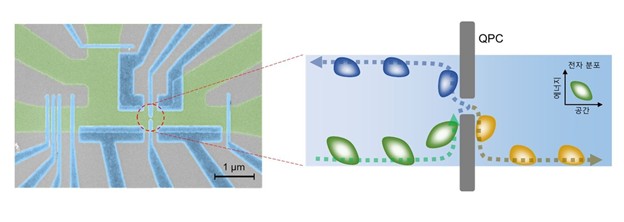The Korea Research Institute of Standards and Science (KRISS) announced on the 27th that it has successfully developed a method to freely control the energy of a single electron—smaller than an atom—using an energy filter. The breakthrough is expected to contribute significantly to the development of high-performance qubits, a key component of quantum computers.
Electrons, fundamental particles that make up atoms, can be used to create qubits when their paths are split. Unlike classical computers, which use bits to represent data in binary states (0 or 1), quantum computers use qubits, which can exist in a superposition of both states simultaneously, offering vastly superior computational capabilities.
Single-electron qubits have garnered attention for their scalability, as dozens can theoretically be integrated into a compact area. However, the extreme sensitivity of electrons to external environments has long posed challenges to improve their stability and performance.

The performance of a qubit hinges on how stably its quantum state can be maintained. Due to their minuscule size, electrons are particularly prone to instability, easily affected by external disturbances or interactions with other electrons—leading to the loss of their quantum properties.
To address this, the KRISS research team developed a technique that uses an “energy filter”—acting like a sieve—to precisely control the energy distribution of a single electron and reduce its instability. By generating a single electron within a quantum dot (a nanoscale semiconductor particle) and applying a voltage to form an energy filter, the team was able to selectively allow only high-energy electrons to pass through. This method successfully reduced the electron’s energy uncertainty—its margin of measurement error—by more than half.
Principal researcher Myung-Ho Bae stated, “This technology is expected to be widely applicable in the development of single-electron-based quantum information processing systems, including high-performance qubits.”


